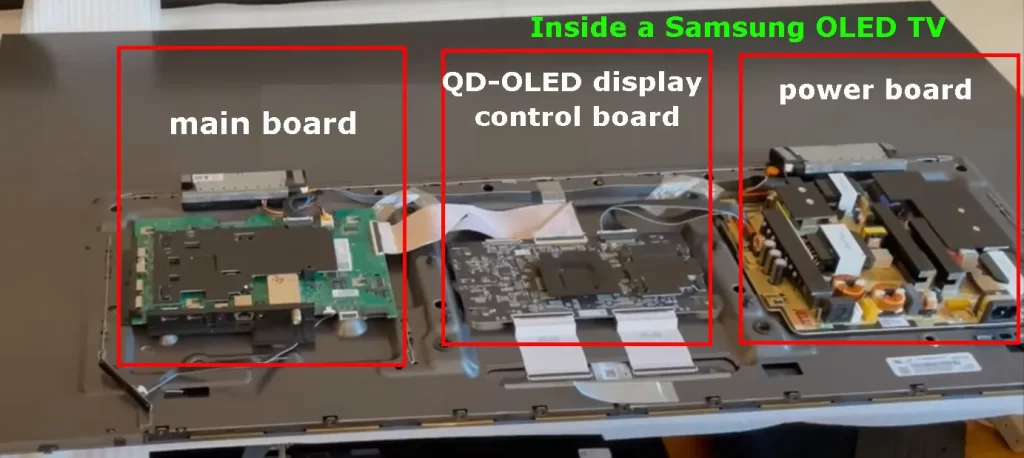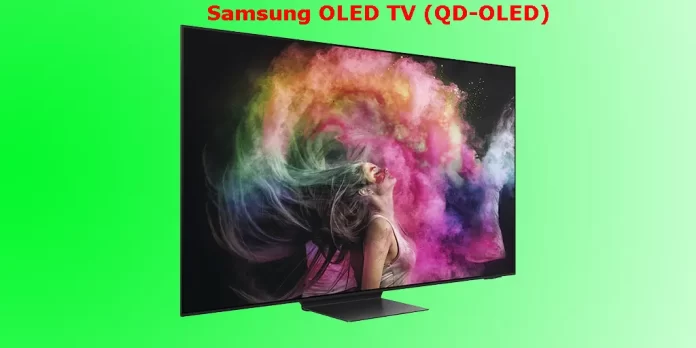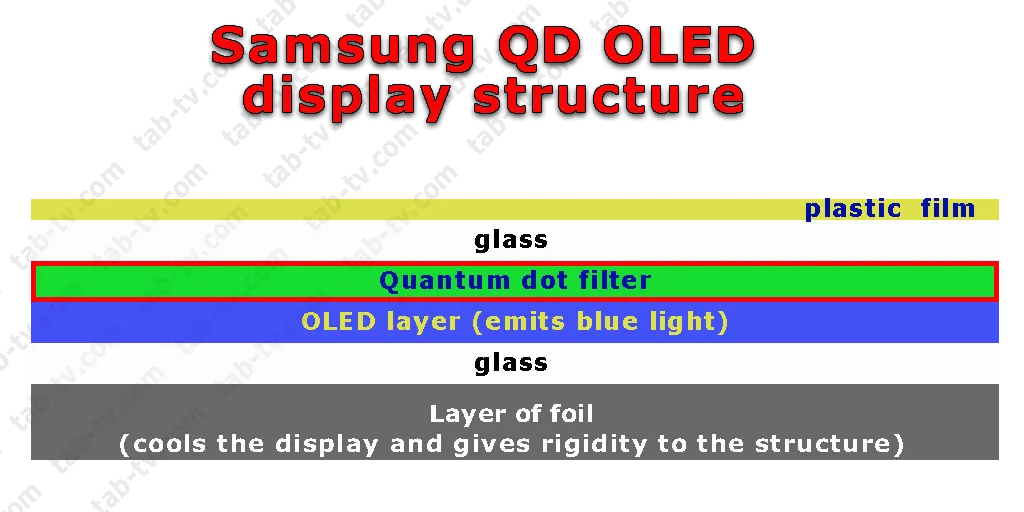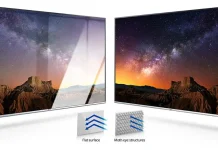QD-OLED is a screen technology developed by Samsung. According to Samsung, it combines the advantages of OLED and QLED, but what’s undeniable is that these screens offer deep blacks, high contrast, and rich, natural colors. The first TVs with such screens appeared in 2022 — at that time, models with 55- and 65-inch diagonals were available. At the end of that year, Samsung began producing 77-inch panels, which have been included in Samsung’s OLED TV lineup since 2023.
How Does the QD-OLED Screen Work?
At the heart of QD-OLED is a layer of blue organic LEDs (OLEDs) that emit their own light — this is the source of brightness. Above that is a fine quantum dot-based color filter: part of the light is converted into red, green, and blue. This way, each subpixel is controlled individually, allowing for precise color rendering and uniform glow.
Although the screen is made of glass panels, LEDs, filters, and protective and cooling films, it is only 1.1 mm thick. Samsung’s OLED screens have their own features: a tri-color structure and larger pixels — the pixel size was increased to enhance brightness. However, there are some downsides — Samsung’s OLED TVs consume slightly more power.
What’s Inside a Samsung OLED TV?
Unlike conventional LED TVs, OLED models are more complex, even though they contain the same number of electronic modules. In addition to the standard power supply and the main board with the processor and inputs, Samsung TVs include a key component — a separate module for controlling the OLED screen, called the T-Con board. In Samsung TVs, this board is much larger than in standard LED TVs. It is responsible for powering and controlling millions of subpixels in the OLED display, delivering high-quality images. Since QD-OLED panels have larger pixels, they also generate more heat. That’s why there is a film layer on the back of the panel for heat dissipation.

Main Modules of the TV:
- Main board: Contains the “brain” of the TV — the processor, memory, digital tuner, and signal inputs.
- OLED display control board: Controls all subpixels of the screen.
- Power supply board: Converts mains voltage into the power required to operate the TV.
Who Manufactures QD-OLED Screens for Samsung TVs?
QD-OLED screens are manufactured by Samsung Display, a division of the Samsung Corporation. Until 2022, this division owned a factory in China that produced panels for LED and QLED TVs. In 2022, the factory was sold to the Chinese company TCL, which forced Samsung to exit the standard LED screen production segment and focus on the new OLED technology. QD-OLED panels are now produced in Samsung’s new factory in South Korea.
Samsung sees great potential in QD-OLED panels and continues to invest in this technology. The company is working to lower the production costs of QD-OLED panels to compete in price with LED TVs — and especially with OLED TVs from LG. Samsung is also expanding its panel lineup: in 2023, it began manufacturing 77-inch panels alongside the standard 55- and 65-inch sizes. However, Samsung is still unable to produce enough panels and, starting in 2024, began purchasing OLED panels from LG for some of its OLED TV models — specifically 43-inch, 48-inch, 77-inch, and 83-inch sizes.







